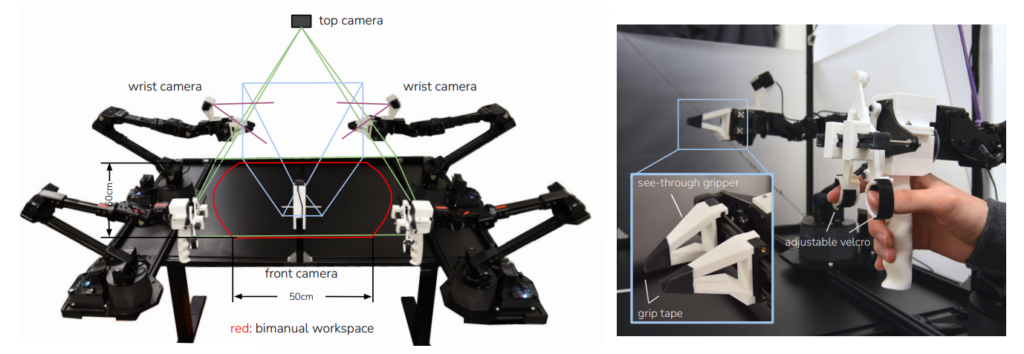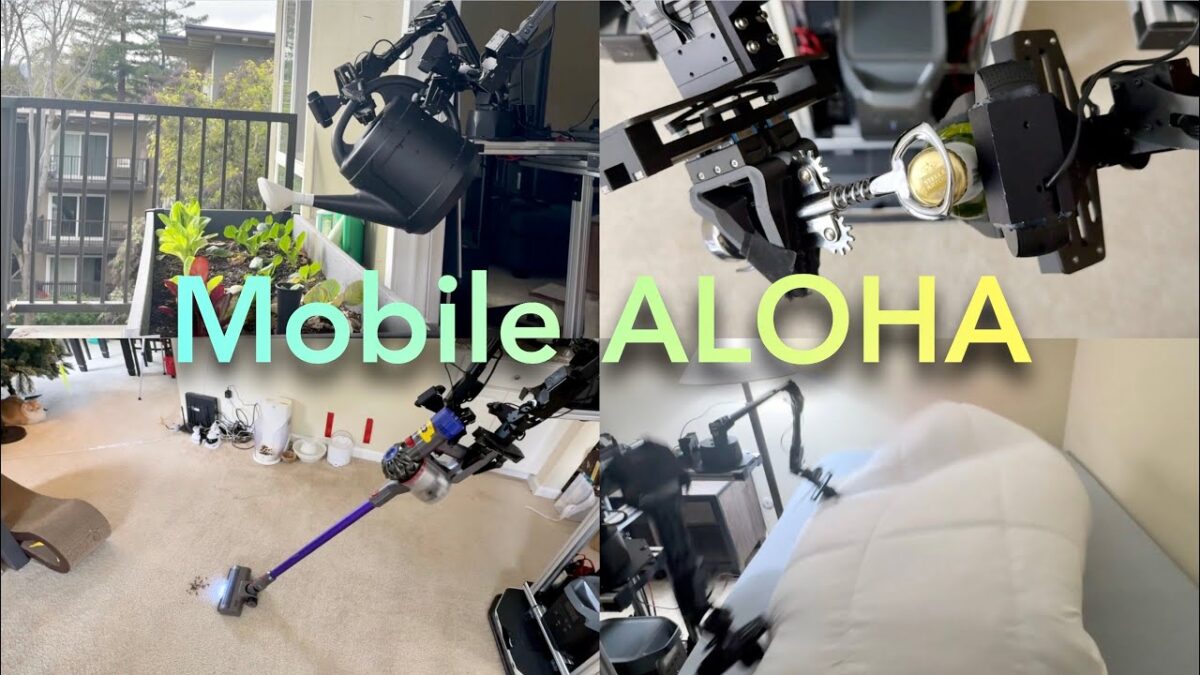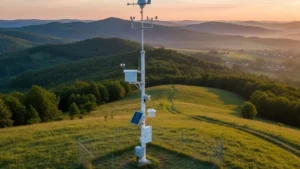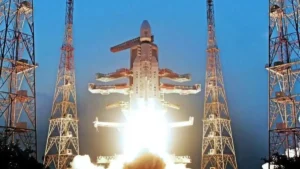Stanford University has unveiled Mobile ALOHA, a robotic system designed to elevate the capabilities of bimanual mobile manipulation. This innovation builds upon the foundation of Google DeepMind’s ALOHA system, taking it to new heights by introducing mobility and dexterity as focal points in robotic learning. Developed in collaboration with Berkeley University and Meta, Mobile ALOHA promises to reshape the landscape of robotics.
Bridging the Gap: ALOHA Meets Mobility
- Mobile ALOHA extends the functionality of Google’s ALOHA system by integrating a mobile base and a whole-body teleoperation interface.
- This evolution enables the system to replicate complex mobile manipulation tasks, addressing the limitations of traditional imitation learning often confined to tabletop scenarios.
- The core objective of Mobile ALOHA is data collection, serving as a stepping stone for learning and mimicking a diverse range of bimanual activities.
Learning from Human Demonstrations
- At the heart of Mobile ALOHA lies its ability to co-train with existing static ALOHA datasets, setting it apart from conventional robotic systems.
- Leveraging supervised behavior cloning and utilizing 50 demonstrations for each task, the system achieves remarkable success rates, enhancing performance on mobile manipulation tasks by up to 90%.
- This breakthrough empowers the robot to autonomously handle intricate scenarios, from sautéing shrimp to opening wall cabinets.

Real-World Applications
- Mobile ALOHA transcends the boundaries of traditional robotics, showcasing its potential for a myriad of real-world applications.
- The system excels in tasks such as calling and entering elevators, storing heavy cooking pots, and rinsing used pans.
- Its cost-effectiveness positions it as a practical solution, ushering in a new era in robotics where machines can perform a wide range of mobile manipulation tasks with precision and adaptability.
Aligning with 2023’s Robotics Advancements
- The introduction of Mobile ALOHA aligns seamlessly with the notable advancements in the field of robotics witnessed in 2023.
- From Boston Dynamics upgrading Atlas for intricate construction tasks to Elon Musk’s Tesla working on the humanoid robot Optimus, the robotics landscape has evolved rapidly.
- Stanford’s Mobile ALOHA joins this wave of innovation, providing a cost-effective solution that enhances efficiency in kitchen tasks and navigates complex environments.
The Significance of Mobile ALOHA’s Integration
- Mobile ALOHA’s integration of mobility and dexterity into bimanual mobile manipulation signifies a significant stride in the field of robotics.
- Stanford’s innovative approach to Google’s base model combines low-cost hardware with a novel imitation learning algorithm, setting Mobile ALOHA apart in the realm of robotic systems.
- As the robotics field continues to push boundaries, Mobile ALOHA stands as a testament to the potential of accessible and reproducible solutions for fine manipulation tasks.
Important Questions Related to Exams
1. What is the primary purpose of Mobile ALOHA?
A) Entertainment
B) Data collection
C) Communication
2. Which university collaborated in the development of Mobile ALOHA?
A) Berkeley University
B) MIT
C) Harvard
3. What sets Mobile ALOHA apart from conventional robotic systems?
A) Higher cost
B) Static datasets only
C) Integration with Meta
4. What aligns Mobile ALOHA with the 2023 advancements in robotics?
A) Deep learning
B) Integration of mobility
C) Augmented reality
Kindly share your responses in the comment section.




 Govt Relaxes DSIR Norms to Boost Deep-Te...
Govt Relaxes DSIR Norms to Boost Deep-Te...
 India Develops 3D-Printed Automatic Weat...
India Develops 3D-Printed Automatic Weat...
 Hyderabad Start-ups Build Mini Satellite...
Hyderabad Start-ups Build Mini Satellite...







